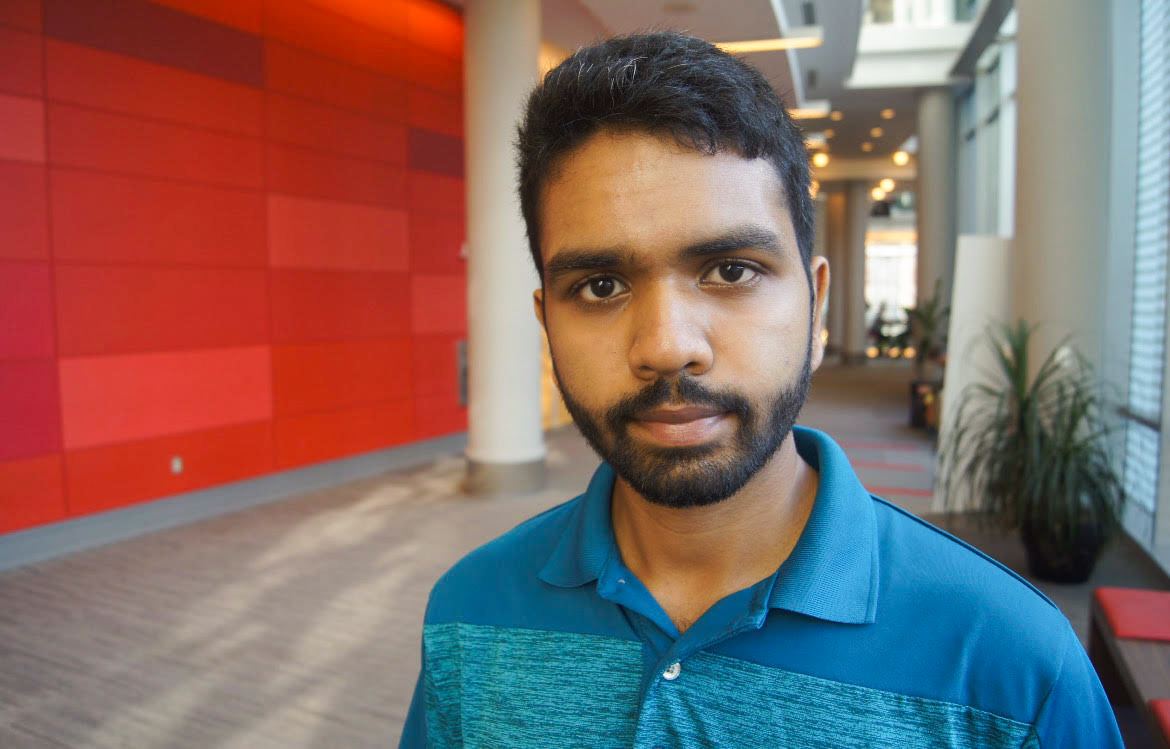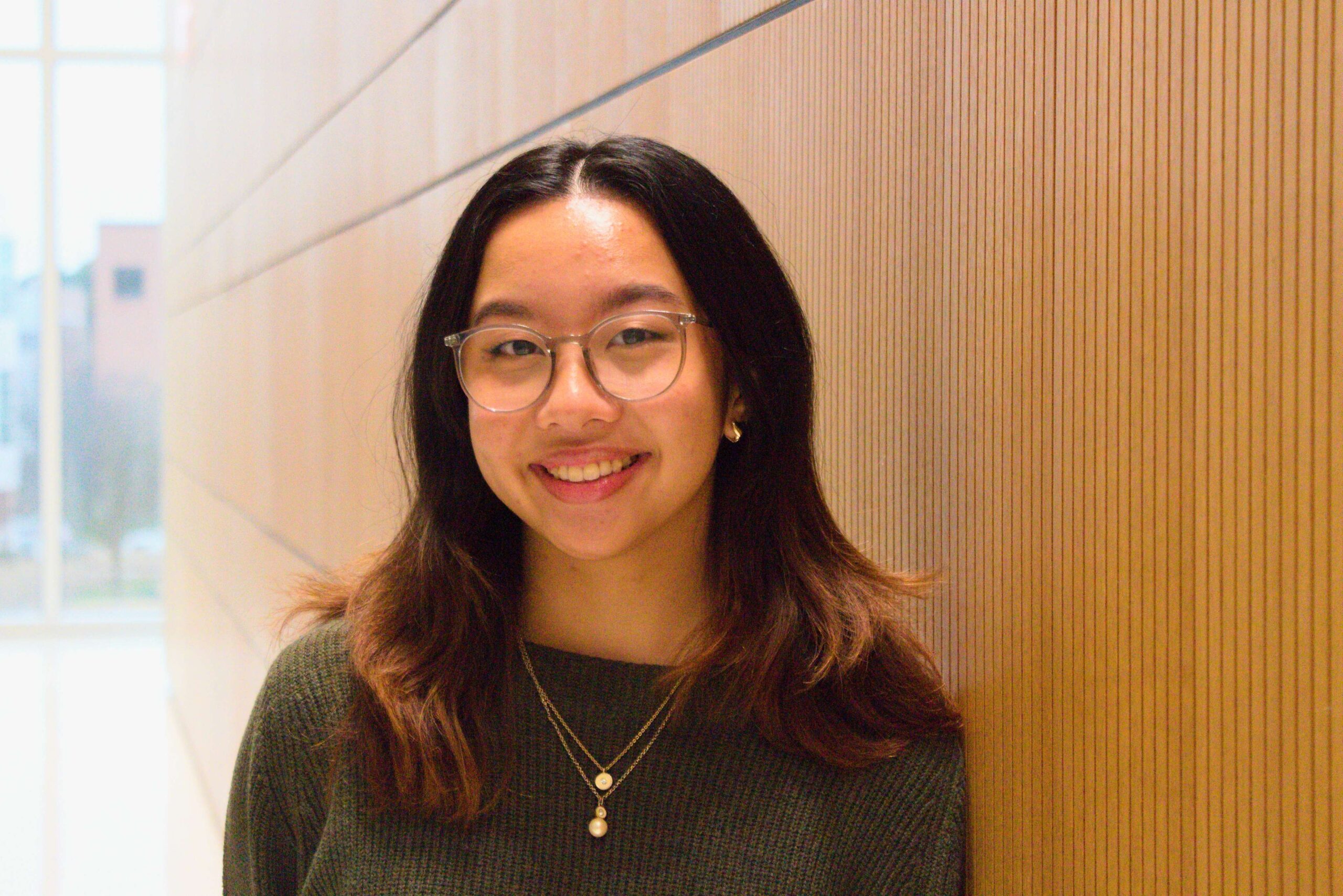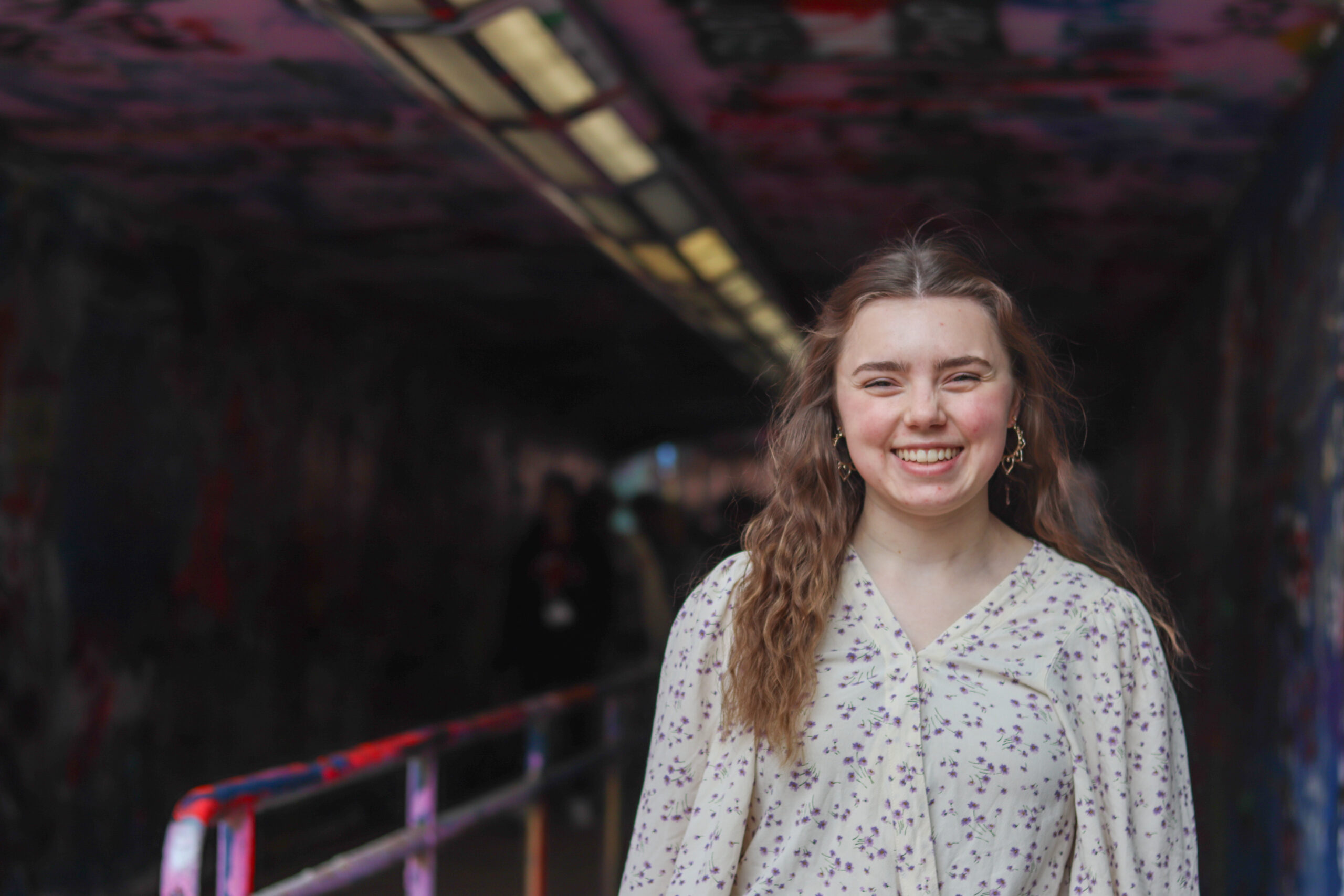Goodnight Alumni Spotlight: Sreeram Venkat ’21

Goodnight Scholars Alumnus Sreeram Venkat ’21 has a question for you…have you heard of the “Stone Soup” fable? At least that’s his response when people ask him why he decided on a major in Mathematics. As Sreeram explains in his spotlight, most of the biggest issues in society (and in the Stone Soup) can be viewed as multidisciplinary, and that’s why his goal is to be a mathematical modeler that incorporates elements of physics, chemistry, biology, and other subjects. Now in his first year of a PhD program at UT Austin, Sreeram takes us into his life as a PhD student and also reflects on his time as a Goodnight Scholar and time at NC State.
Goodnight Scholars Program: Tell us about yourself?
Sreeram Venkat ’21: I majored in Applied Mathematics and Physics, graduating with the Class of 2021. As part of the Goodnight Scholars Program, I served as a First Year Mentor and was on the Service Raleigh Web Committee. I was actually born in St. Louis, and lived in Kansas until I was 10, when we moved to the Cary/Morrisville area.
What inspired you to pursue a PhD in computational/applied math after graduating from NC State? Why did you end up choosing The University of Texas at Austin? Have you enjoyed living in Austin?
When people ask me why I chose to become a mathematics major, I reply by asking them if they have heard of the fable “Stone Soup”, which I view as the solution to many of today’s scientific problems.
The vast majority of the issues affecting our society are interdisciplinary issues. From the global water crisis to renewable energy problems to the treatment of life-threatening diseases, today’s problems have no hope of being solved by just one scientific discipline. However, if we take bits and pieces of knowledge and technology from all of the various branches of science, we stand a much better chance of addressing these problems. This is precisely the moral of “Stone Soup” — and the stone is mathematics.
As a mathematical modeler, my goal is to create comprehensive models incorporating theoretical knowledge and data from physics, chemistry, biology, and other scientific disciplines in order to solve problems. For the past six years, I have worked on multiple modeling projects ranging from monitoring disease spread to simulations of economies. All of these projects have only enhanced my curiosity and eagerness to learn more by working with professionals in different fields. I am especially interested in learning the problem-solving methodologies of many scientists so I can apply them when creating new models. I experienced a glimpse of this when I learned about the technique of simulated annealing, an effective optimization method that combines knowledge from physics and biology. Since then, I have been drawn towards learning new ways of combining scientific knowledge to develop solutions and algorithms.
I heard about the Oden Institute for Computational Science, Engineering, and Mathematics from one of my math professors who was a former postdoc there under my PhD advisor (Dr. Omar Ghattas). My undergraduate research advisors (Dr. Ralph Smith and Dr. Tim Kelley) were also good friends and collaborators of the people at the Oden Institute, so they strongly recommended me to apply. At the graduate student open house, I met with my current advisor, who discussed several research projects that I could join for over two hours! After seeing the welcoming atmosphere and enthusiasm of the students and faculty at Oden, I knew it was the best place to continue my career.
I haven’t had the chance to explore Austin that much yet, but I have enjoyed what I have seen so far. Though it is definitely a bigger city than any of the places I have lived previously, the area near campus is very bicycle-friendly, which makes the commute easier.
What are some of the research projects you work on in your PhD program?
I am currently working on developing methods to solve the Bayesian inverse problem for gravitational waves. Gravitational waves have gained significant traction in the scientific community since their first detection in 2015 by the LIGO Collaboration. Now, there are 3-4 gravitational wave detectors around the world that receive thousands and thousands of signals each day. The problem is, the signals are extremely noisy, and there is no easy way to determine what objects could have created the signal. Suppose we think a wave was created when two black holes collided somewhere in deep space. Given the masses and spins of the black holes Einstein’s equations tell us what the resulting gravitational waves should look like. We have to determine what physical properties of the black holes correspond to our observed wave. In order to compute those parameters (and error bars), we end up needing to solve Einstein’s equations multiple thousands of times. However, even the fastest codes take several days to a week on a supercomputer to solve just one equation. As a result, we have to create cheap approximations that are as accurate as possible but can be solved much faster. Now, I am looking at machine learning and Gaussian Process models that can perform this acceleration.
With the LISA space-based gravitational wave detectors expected to come online in the next decade, it is important that we have reliable ways to analyze the detector data in real-time. As the detectors become more sophisticated, we will be able to measure gravitational waves from a plethora of sources, allowing us to gain insight into the origins and inner workings of our universe.
What would your advice be to a current or future Goodnight Scholar who is interested in pursuing a PhD or pursuing higher level research opportunities?
I would definitely talk to some of the professors in your field of interest and try to set up a project or independent study with them. Many of the scientific disciplines have dedicated labs or research groups where you can work with one or two professors, postdocs, and graduate students. You can start by reaching out to a professor or lab whose work particularly interests you. Most departments have weekly seminars where students and faculty give research presentations. These are a great way to see all of the projects that may be available to you. You can also take a class that is being taught by the professor whose group you want to join so that you get to know them better.
Another amazing opportunity to get research experience is through REUs (Research Experience for Undergraduates). These are 8-12 week long summer research programs at different universities across the US sponsored by the NSF. At these REUs, you get to work with people from all walks of science to complete a research project in a short period of time. If you are interested in applying to a university for graduate school, I highly recommend applying for any REU programs they might have. That way, you can get to know the faculty and research of the department where you may end up for your PhD. REUs are also great experiences to list on your CV and may even result in a research publication!
Can you describe the impact being a part of the Goodnight Scholars Program had on your life both personally and professionally? Reflecting back on your time with the program, what were some of your favorite memories?
The Goodnight Scholars Program definitely had a lasting impact on both my personal and professional lives. In my four years at NC State, I made many friends through GSP; their various perspectives on lives shaped the way I think about the world to this day. I fondly remember the times we got together to play board games and became the underdogs in the *definitely not rigged* Major Madness tournament.
Through the Goodnight Scholars Program, I gained several professional skills that were extremely useful in my career. I learned how to become a better speaker and communicate complex scientific concepts to the public in an engaging manner. When I recently gave a talk at the SIAM conference for Uncertainty Quantification, several audience members applauded my confidence and clarity while speaking, asking how I learned to present. I responded by telling them about GSP, a smile on my face as I recalled the improv sessions and random callouts from Jay that brought me to this point.
What are some of your hobbies and interests outside of school and research?
I have been learning and performing Indian classical Carnatic music since the age of five. After I come home from a long day of classes or research, practicing or learning a new song is one of my favorite ways to relax. Surprisingly, Carnatic music has many mathematical structures embedded in it, and it can be really fun to create and solve musical “puzzles” based on those structures. Aside from music, I enjoy playing Pokemon and Magic the Gathering at a semi-competitive level.
- Categories:


